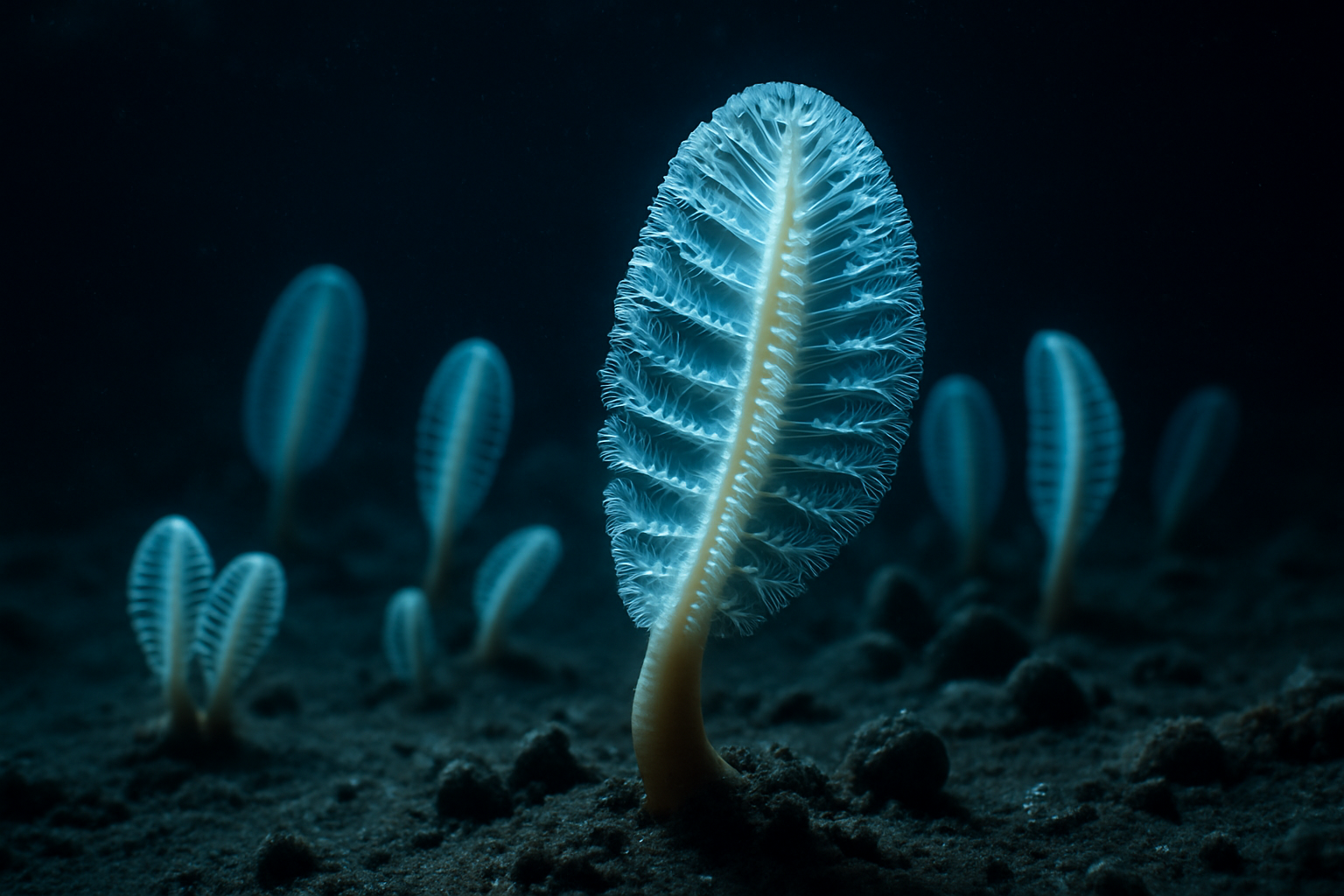Underwater Ballet: The Mesmerizing World of Sea Pen Colonies
In the depths of our oceans, a hidden spectacle unfolds as sea pens sway gracefully in the currents. These marine invertebrates, often overlooked by casual observers, create stunning underwater displays that rival the most elaborate choreographed performances. Dive into the captivating realm of sea pen colonies and discover the intricate lives of these fascinating creatures that blur the line between plant and animal.

The Ancient Lineage of Sea Pens
Sea pens have a rich evolutionary history dating back over 450 million years. Fossil records indicate that these creatures have remained relatively unchanged since the Ordovician period, making them living fossils that provide valuable insights into ancient marine ecosystems. Their ability to thrive in various oceanic environments, from shallow coastal waters to the abyssal depths, has contributed to their long-standing success as a species.
Anatomy of a Living Quill
The structure of a sea pen is a marvel of natural engineering. Each colony consists of a primary polyp, known as the oozooid, which forms the central axis or rachis. This central structure supports numerous secondary polyps, or autozooids, which are responsible for feeding and reproduction. The colony is anchored to the seafloor by a muscular peduncle, allowing it to retract into the sediment when threatened.
Synchronized Swaying: A Mesmerizing Display
One of the most captivating aspects of sea pen colonies is their synchronized movement. When observed in large groups, these creatures create an underwater ballet, swaying in unison with ocean currents. This coordinated motion serves multiple purposes, including improved feeding efficiency and oxygen exchange. The rhythmic movement also helps distribute nutrients throughout the colony and aids in the dispersal of gametes during reproduction.
Bioluminescent Brilliance
Many species of sea pens possess the ability to produce bioluminescence, adding another layer of wonder to their already impressive repertoire. This natural light show is not only beautiful but also serves as a defense mechanism against predators. When disturbed, sea pens can emit a bright flash of blue-green light, startling potential threats and allowing the colony time to retract into the safety of the seafloor.
Ecological Importance and Conservation Challenges
Sea pens play a crucial role in marine ecosystems, providing habitat and shelter for various small organisms. Their presence often indicates a healthy and diverse benthic environment. However, like many marine species, sea pens face threats from human activities such as bottom trawling, ocean acidification, and habitat destruction. Conservation efforts are underway to protect these unique creatures and the ecosystems they support.
The Future of Sea Pen Research
As technology advances, so does our ability to study these enigmatic creatures. Remote-operated vehicles (ROVs) and advanced imaging techniques are providing researchers with unprecedented access to deep-sea habitats where many sea pen species reside. These tools are helping scientists uncover new species and better understand the ecological roles of sea pens in marine food webs.
The world of sea pens continues to captivate marine enthusiasts and researchers alike. As we delve deeper into their biology and behavior, we uncover new mysteries and marvels that highlight the importance of preserving our ocean’s biodiversity. The underwater ballet of sea pen colonies serves as a reminder of the hidden wonders that exist beneath the waves, waiting to be discovered and protected for future generations to appreciate and study.





